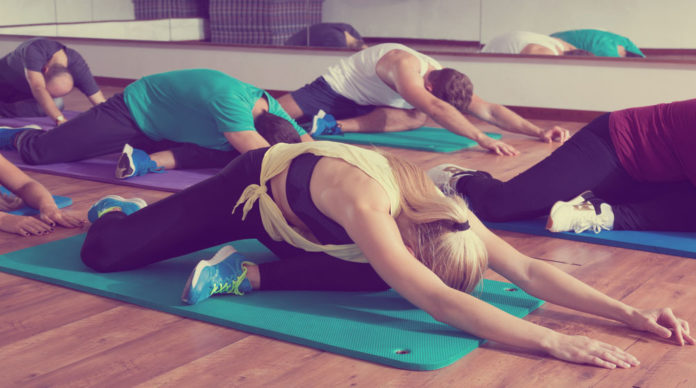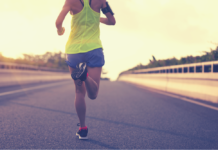Practicing yoga has great health advantages, including weight loss, cardiovascular health, injury recovery, stress reduction, sleep improvement… Should we go on? But despite the influential and enticing benefits it continually offers, yoga is actually a generic term, just as “exercise” encompasses biking, running, swimming, weightlifting, and “yoga-ing.” So what are the different yoga styles? BistroMD has 14 you can choose from (or even try them all)!
Different Types of Yoga
- Anusara. Considering yoga has tracings back to 5,000 years ago, this modern-day yoga is a newer type founded in 1997 by John Friend. Anusara meaning “going with the flow,” the practice promotes the connection of the poses with heart and mind. Teachers tend to not fix student’s poses but rather explain the proper alignment, allowing students to feel less rigid and more encouraged during the practice.
- Ashtanga. This style of yoga includes more vigorous abilities and promoted as an intense and athletic style. Ashtanga, meaning eight limbs or branches, extends on standard yoga poses and is promoted for building core strength and toning the body. Since this style of yoga is physically demanding, be prepared to sweat!
- Bikram. Also known as Hot Yoga, Bikram is a series of yoga poses and techniques in a heated environment, largely simulating a sizable sauna. The practice is promoted to scientifically warm and stretch muscles, ligaments, and tendons in a series of poses. Though beginner courses are available, the heat may not be enjoyable to all. For this reason, Bikram yoga is encouraged at the yogi’s own discretion.
- Dru. Described as a graceful yet potent style of flowing movements, Dru’s foundation broadens its focus on visualization. Though it continues to promote body flexibility and strengthening, it further deepens connections to whole-body health and happiness. Dru yoga is promoted for all fitness levels.
- Hatha. Hatha yoga is essentially the basic fundamentals of yoga – including the attentions on breath, meditation, and postures. It is considered as a broad yoga term that encompasses all postural yogas and is the most practiced across the U.S. If just starting the trek of yoga, it may be the most beneficial to gain insight of terms and movements.
- Iyengar. This type of yoga offers both equal parts of body strengthening movements and peace of mind. Iyengar focuses attention to details, including the alignment of body postures and precision. Since poses are held for longer periods of time, Iyengar may be a good practice for yogis interested in a slower-paced environment desiring to increase the performance of posture.
- Jivamukti. This type of yoga style is based on a physics, ethics, and spirituality. The unionization further adds emphasis on animal rights, veganism, environmentalism, and social activism and based on five main tenets: Shastra (scripture), Bhakti (devotion to God), Ahisa (nonviolence of non-harming), Nāda (deep inner listening, chanting, and elevated music), and Dhyana (meditation). Jivamukti is suggested to be the most practiced yoga type among celebrities.
- Kripalu. Kripalu is described as an authentic yoga type within a contemporary Western lifestyle. Focusing on the body, mind, and energy, Kripalu Yoga is promoted for everybody. The technique focuses on relaxation, stretching, and strengthening while connecting breath work.
- Kundalini. Kundalini incorporates movement, dynamic breathing techniques, mediation, and the chanting and singing of mantras. If desiring a lesser physical demand, a deeper spiritual development, and a livelier practice and environment, Kundalini might be ideal for you.
- Restorative. As its name suggests, Restorative Yoga promotes restoration and recovery. Unlike a continuous series of multiple poses other yoga types display, Restorative Yoga typically focuses on merely five or six poses. Each pose is often assisted with a prop, held for five minutes or longer, and encourages complete relaxation and rest.
- Sivananda. Coined after the original presenter by Swami Sivananda, this style of yoga is more of a holistic approach that focuses on the entire body. Sivananda concentrates more on relaxation and breathing while encouraging a vegetarian diet and positive thinking. If desiring a complete yogic lifestyle, Sivananda may be the perfect fit!
- Viniyoga. Viniyoga is the comprehensive style encompassing the teachings of asana, pranayama, sound, chanting, personal ritual, and study of texts. It is highly individualized and encourages its supports to adapt poses and goals to align with personal needs and abilities. And rather than centering on building strength and flexibility, the yoga style can be thought of more as a “warmup,” ultimately reducing injury risk.
- Vinyasa. Also recognizable as Power Yoga, Vinyasa is an accelerated yoga type. It is promoted as “fitness” or “gym” yoga related to its amplified intensity. Diverse poses within and between Power Yoga classes surfaces its unpredictability and reduces the risk of burnout and dropout of its supporters.
- Yin. Promoted as a slower-paced yoga style, Yin focuses on meditation while stretching connective tissue around the joints, including the knees, pelvis, sacrum, and spine. It is designed to assist in sitting down more comfortably and for longer periods of time. (Yang focuses on manipulating muscle tissues).









